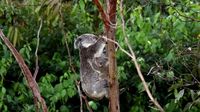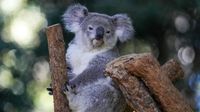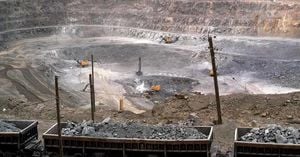Australia has taken a bold step in the fight to save one of its most iconic—and embattled—animals. On September 14, 2025, the country approved the world’s first vaccine to protect koalas from chlamydia, a disease that has devastated wild populations for decades. The breakthrough, developed over more than ten years by researchers at the University of the Sunshine Coast and led by microbiology professor Peter Timms, is being hailed as a potential game-changer in koala conservation efforts.
Chlamydia isn’t just a minor nuisance for koalas. According to NewsNation and statements from lead researcher Timms, the disease causes infertility, blindness, and often death in these marsupials. It accounts for nearly half of wild koala deaths in Australia. The new single-dose vaccine, which requires no booster, has shown remarkable results in test trials—reducing mortality by at least 65% and cutting the likelihood of infected koalas developing severe symptoms during their breeding years.
"We knew a single-dose vaccine — with no need for a booster — was the answer to reducing the rapid, devastating spread of this disease," Timms said in a press release, as cited by NewsNation. The vaccine is now available in wildlife hospitals, veterinary clinics, and in the field, especially in the hardest-hit regions of Queensland and New South Wales, where infection rates often soar above 50%.
While this medical breakthrough brings hope, it’s only one piece of a much larger puzzle. Koalas, beloved for their cuddly appearance and sleepy treetop lifestyles, are facing a cascade of threats that go far beyond infectious disease. Environmental changes, habitat loss, road injuries, dog attacks, and climate change have all conspired to push their numbers down. In fact, some experts and organizations have warned that koalas could become extinct in the wild by 2050 if current trends continue, a stark assessment supported by a 2020 New South Wales government report.
The term "functionally extinct" has even been used to describe certain local populations—meaning that, while some koalas remain, their numbers are so low that they can no longer play their vital ecological role or recover without intervention. However, this label is controversial. According to reporting from A-Z Animals, the Australian Koala Foundation popularized the term in 2019 to draw attention to the crisis, but academics from the University of Sydney pushed back, arguing that such dire language might discourage much-needed conservation work.
Counting koalas is no easy task. They’re notoriously hard to spot in the wild, and their wide distribution makes accurate surveys difficult. Still, Australia’s National Koala Monitoring Program, launched with $10 million in government funding, has provided the best estimates to date. As of March 2024, between 95,000 and 238,000 koalas were believed to live in Queensland, New South Wales, and the Australian Capital Territory. The Threatened Species Scientific Committee estimated a population of 92,184 in these areas back in 2021. While populations in Victoria and South Australia appear stable, those in Queensland and NSW remain under grave threat.
In February 2022, the situation became so dire that koala populations in Queensland, New South Wales, and the Australian Capital Territory were officially uplisted from "vulnerable" to "endangered" under the Environment Protection and Biodiversity Conservation Act 1999 (EPBC Act), as detailed by A-Z Animals. This legal change underscores the urgency of their plight.
So, what’s driving the decline? Habitat loss is the primary culprit. As cities expand and land is cleared for housing, agriculture, mining, and infrastructure, the woodlands koalas rely on are destroyed, degraded, and fragmented. This not only reduces the number of suitable eucalyptus trees—of which koalas are famously picky eaters, feeding on only a handful of the 600-plus species—but also isolates populations, making it harder for them to find mates and maintain genetic diversity.
Roads, while essential for people, are deadly for koalas. According to a 2024 study cited by A-Z Animals, road deaths are the second leading cause of koala mortality after habitat loss, with the risks highest near prime habitats and in areas with poor driver visibility. This danger spikes during breeding season, when males travel farther in search of mates and are forced to cross roads more often.
Dog attacks are another grim threat, particularly during the breeding season from August to February. Most attacks occur at night and in backyards, especially in households with multiple dogs. These attacks are the third most common cause of koala deaths, and the victims are often young or wandering males.
On top of all this, koalas face health threats from other diseases. The Koala retrovirus (KoRV), a gammaretrovirus that can suppress the immune system and trigger cancerous conditions, is a significant concern for conservationists. Stressed and inbred populations are particularly vulnerable, as their weakened immune systems struggle to fight off infections.
Climate change is only making things harder. In western Queensland and New South Wales, rising temperatures, more frequent droughts, and intense wildfires are changing the structure and chemistry of eucalyptus forests. These shifts not only reduce the availability of suitable food but also increase the risk of catastrophic habitat loss.
Despite this litany of challenges, there’s a glimmer of hope. The Australian government has enacted a National Recovery Plan for koalas, which supports both research and on-the-ground management actions. The plan includes investments in habitat restoration, disease management (including the rollout of the new chlamydia vaccine), and community-led conservation projects. Koala hospitals are being expanded, and large-scale habitat protection initiatives are underway. There’s even practical guidance for dog owners on how to make their yards safer for wandering koalas.
It’s a race against time. As scientists and conservationists work to slow the decline, the new vaccine offers a rare victory—a sign that, with enough effort and innovation, it’s possible to turn the tide for one of Australia’s most treasured species. For now, the world watches and waits, hoping that the sleepy faces peering down from eucalyptus branches will remain a living symbol of resilience for generations to come.





